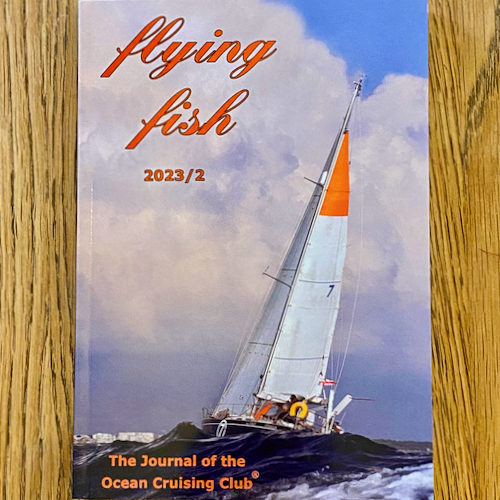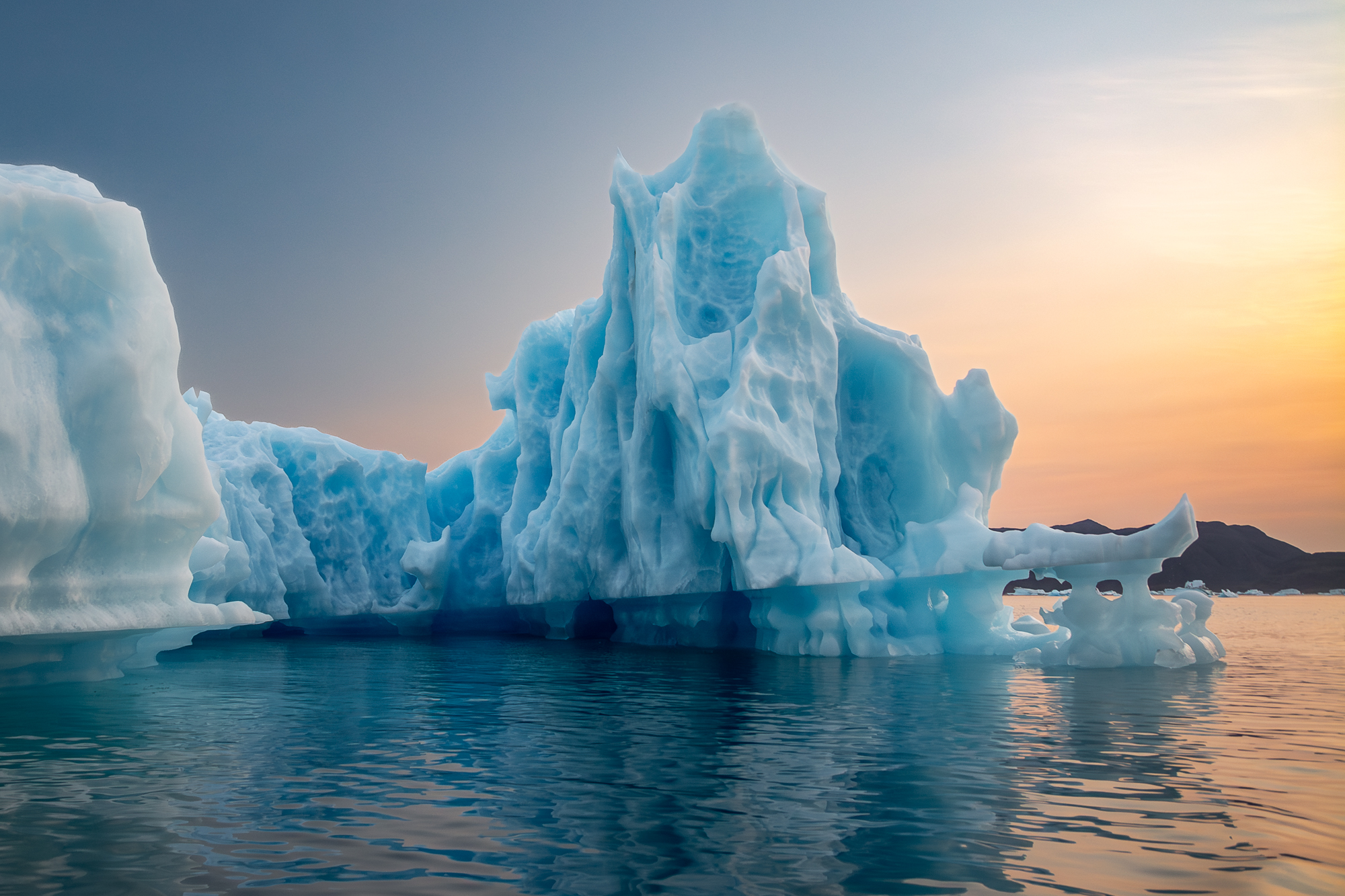On passage to Unartoq, Monday, 24th July 2023
We feel our way through a tight channel with the help of the radar. Through the thick fog, we can just about see the cliffs, rock slabs and boulders that make up the banks of the deep passage. Its end we can’t make out.
Emerging on the other side, we double a long tongue of land, and go past the settlement Alluitsup Paa. While it vaguely takes shape in the mists, we cross wakes with a small local fibreglass boat that speeds the other way. We wave to one another, as is the custom on the water everywhere. A moment later, the fisherman in his neon-coloured floatation suit and his boat blend into the brume, the engine sound is muffled and smothered soon after by the fog.
We carry on into the mouth of the fjord, and the clouds lift off the water, and stay suspended in many layers halfway under the dark grey cloud cover above us. But a glimpse of sunlight far inshore towards the head of the forked Alluitsoq and Unartoq Fjords filters through enticingly. The clouds are lit up by warm amber and gold from beneath. Bizarre mirages appear below the glowing icebergs, doubling their image underneath, making them appear suspended in a sea of reflections. The clouds and fog diffuse, refract, and bounce light, adding to the mystical atmosphere.
A cloud band halfway up the mountain is ushered along into the fjord at the same speed we are going with. I look at the speed log and the wind meter — we both move at 6.4 knots, in our case helped along by the stream of the rising tide. Together with the unchanging dark grey cover above us and the mountain in deep shadows below, this creates the peculiar and arresting illusion of simultaneously being in motion and not moving at all. Part of our landscape keeps up while morphing, breaking up, reforming as it strokes past the terrain, hugging the ridges and diving into the couloirs, part is seemingly unchanging, part is pulled past us like a tapestry.
The mountain ridge to our port, or left, side is peeking out between the cloud blanket above and the wandering bands below. Above the crest, lentil-shaped puffs of shy sweet salmon and pale pink show. The clouds are illuminated from below by the setting sun, which casts their upper sides in delicate mauve, amethyst, and purple.
Serrated cobalt peaks pierce sharply through the silky cotton mantle of clouds at the end of the fjord. The evening light casts lingering shadows and spotlights, accentuating the saw-toothed jaggedness of the pinnacles and spires. A striking sight in this rounded land in which the convex, curved, and ocean-swell shapes of glacier-carved bedrock, melting glaciers, and wind-eroded moraines prevail.
The indigo waters underneath the roving cloud bands create a stark contrast to the brilliance of the floating icebergs. The ice refracts and disperses the light within, and seems to radiate the scattered luminosity. A host of all forms of frozen shapes imaginable shines and gleams in bursting pure white, sapphire, cyan, and mint. The light diffracts inside the berg, reflects off the polished melting facets in lustre shades of burnished cream, and cloaks the shadows in muted cobalt. A fringe of azure and lapis lazuli silhouettes the waterline.
We’re sailing through an impressionistic watercolour painting, with land hinted at behind veils of vapour, hiding and shrouded from our eyes. An inscrutable and majestic sight, with clouds of cotton fluff, gauze and gossamer laid over the land like silk. The painter draws from a rich palette of pastels and brushes with a fluid generous motion. She contrasts with hints of dim greens and jade for the vegetation, bright streaks for cones of scree and a host of dark grey and charcoal for the weathered rock overgrown with lichen. Her palette is inspired by the shades of pigeons and mother-of-pearl.
A baffling block of ice emerges ahead, and at first we can’t make out whether it has dark strata across or is cracked open, letting us see the land behind it before crashing into pieces. On coming nearer, we make out a thick sediment layer with the colour and appearance of wet coffee grounds embedded within the ice. Streaks of silt run down and discolour the side of the ice.
The clouds draw in once more as we drop the anchor and the jagged mountain peaks shroud themselves in mist and disappear. Only the flock of icebergs just outside our cove behind the gravel spit is visible against the darkness after the sun has set. Tomorrow, we will find the hot springs of Greenland. For tonight, we settle down.
Angie


